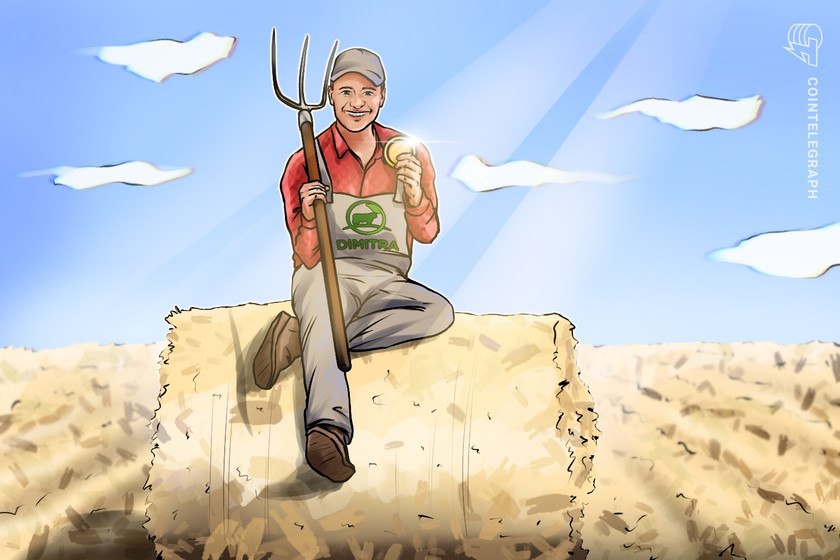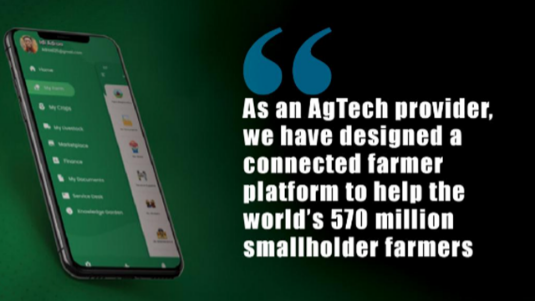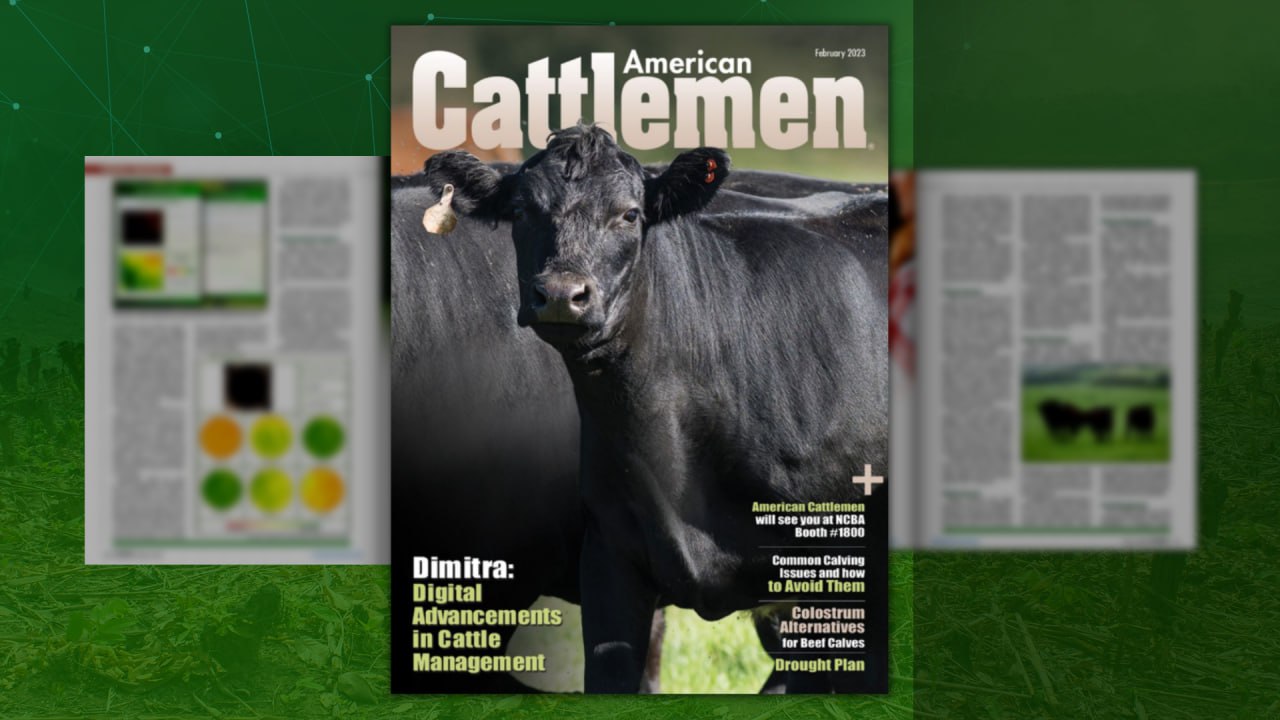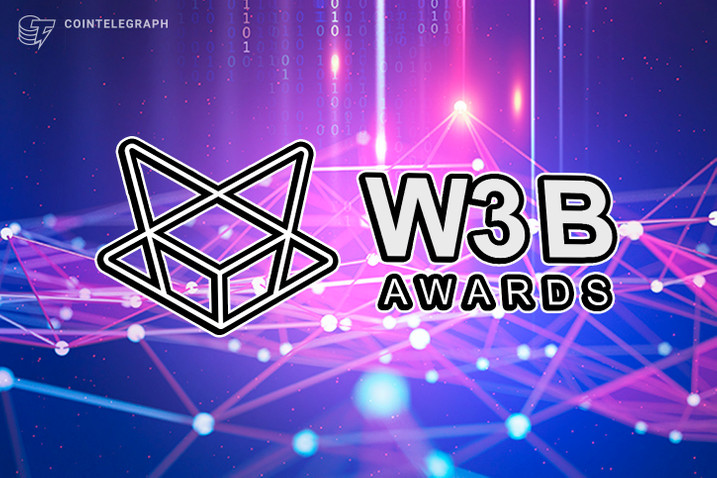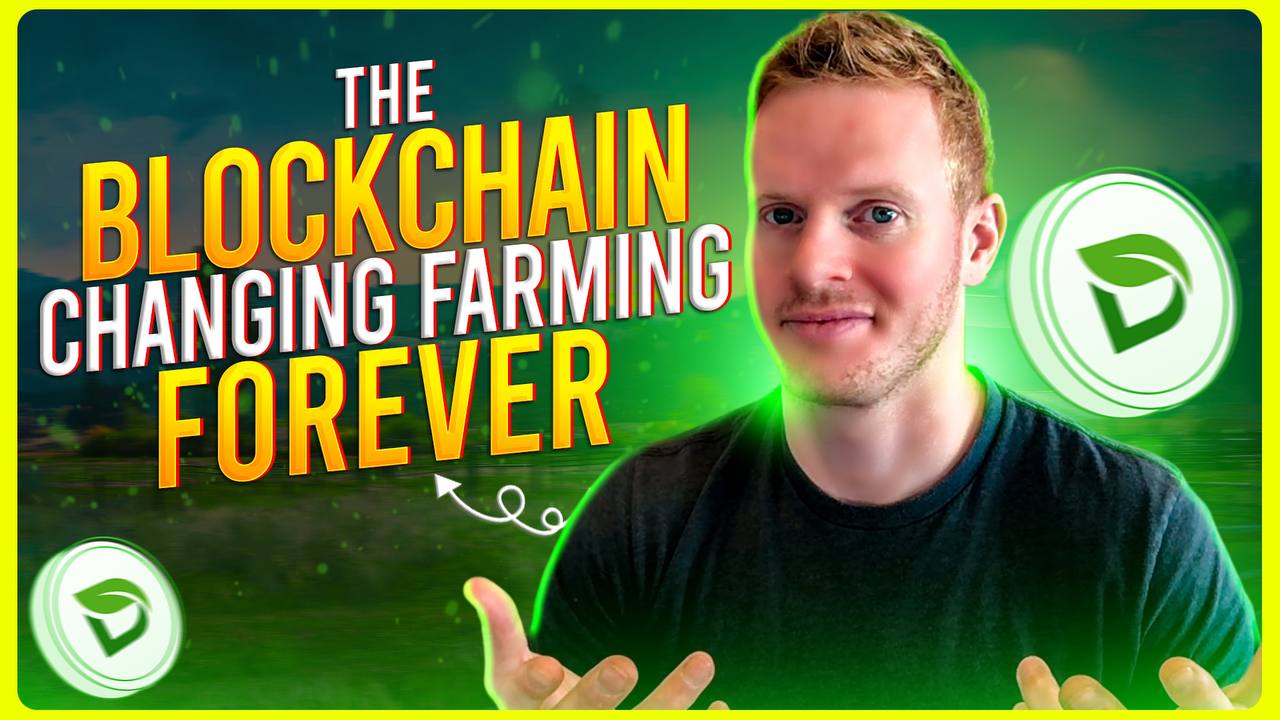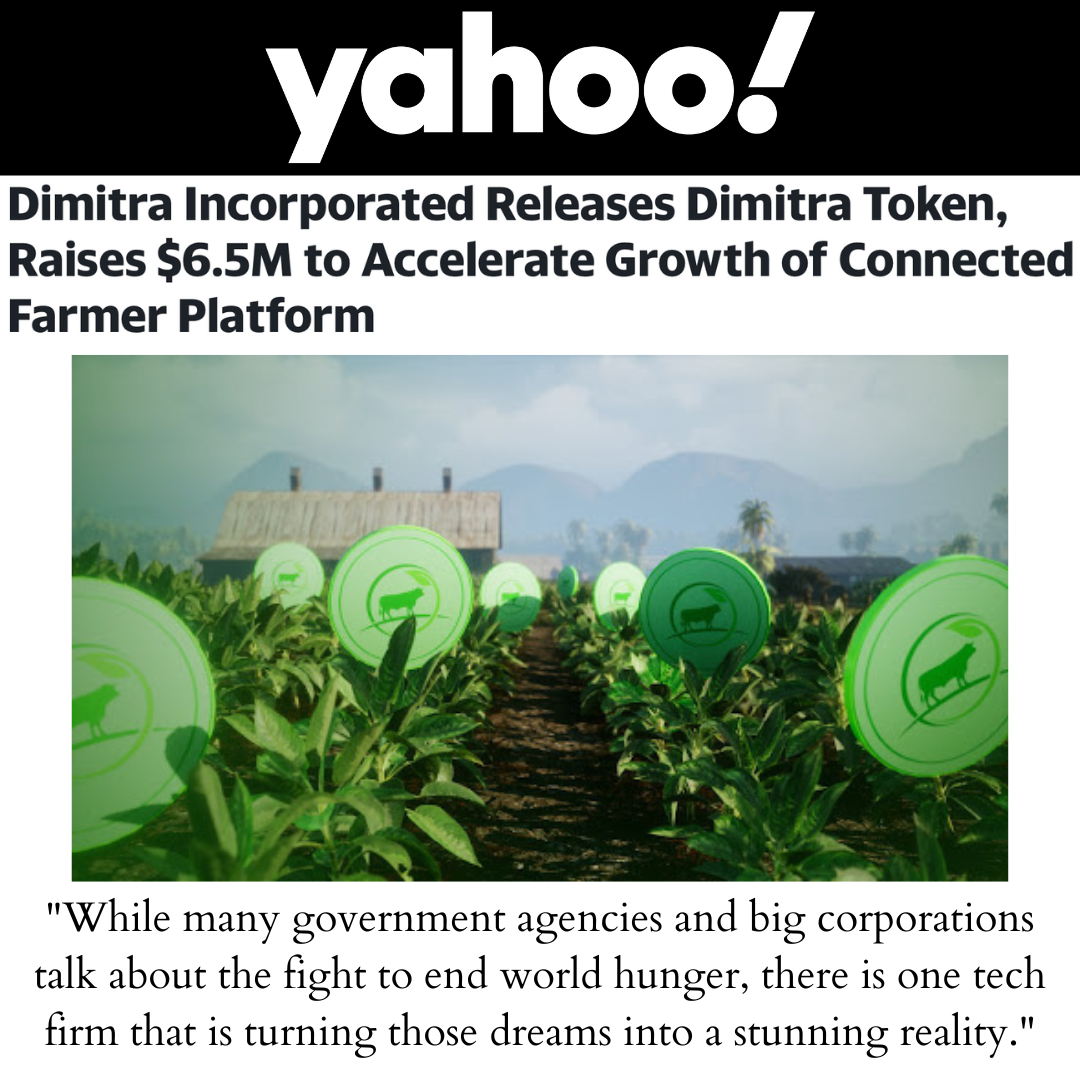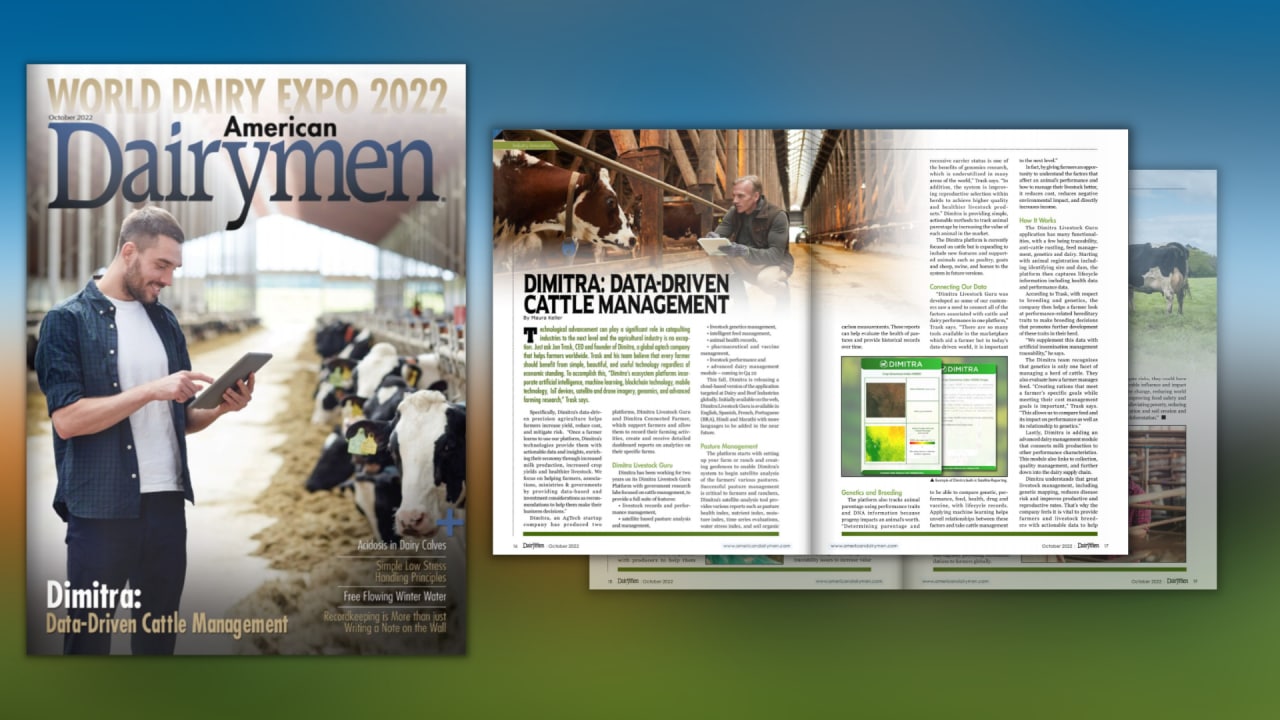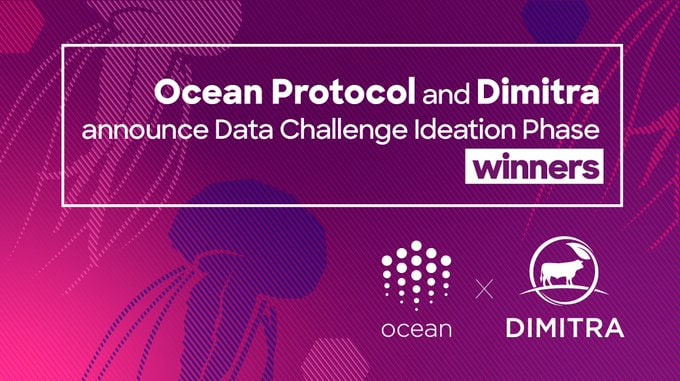Technological advancement can play a significant role in catapulting industries to the next level and the agricultural industry is no exception. Just ask Jon Trask, CEO and founder of Dimitra, a global agtech company that helps farmers worldwide. Trask and his team believe that every farmer should benefit from simple, beautiful, and useful technology regardless of economic standing. To accomplish this, “Dimitra’s ecosystem platforms incorporate artificial intelligence, machine learning, blockchain technology, mobile technology, IoT devices, satellite and drone imagery, genomics, and advanced farming research,” Trask says. Data-Driven Cattle Management
Specifically, Dimitra’s data-driven precision agriculture helps farmers increase yield, reduce cost, and mitigate risk. “Once a farmer learns to use our platform, Dimitra’s technologies provide them with actionable data and insights, enriching their economy through increased milk production, increased crop yields and healthier livestock. We focus on helping farmers, associations, ministries & governments by providing data-based and investment considerations as recommendations to help them make their business decisions.”
Dimitra, an AgTech startup company has produced two platforms, Dimitra Livestock Guru and Dimitra Connected Farmer. Which support farmers and allow them to record their farming activities, create and receive detailed dashboard reports on analytics on their specific farms.
They have been working for two years on its Dimitra Livestock Guru Platform with government research labs focused on cattle management, to provide a full suite of features:
livestock records and performance management,
satellite based pasture analysis and management,
livestock genetics management,
intelligent feed management,
animal health records,
pharmaceutical and vaccine management,
livestock performance and
advanced dairy management module – coming in Q4 22
This fall, Dimitra is releasing a cloud-based version of the application targeted at Dairy and Beef Industries globally. Initially available on the web, Dimitra Livestock Guru is available in English, Spanish, French, Portuguese (BRA), Hindi and Marathi with more languages to be added in the near future.
Pasture Management
The platform starts with setting up your farm or ranch and creating geofences to enable Dimitra’s system to begin satellite analysis of the farmers’ various pastures. Successful pasture management is critical to farmers and ranchers. Dimitra’s satellite analysis tool provides various reports such as pasture health index for example. As well as nutrient index, moisture index, time series evaluations, water stress index, and soil organic carbon measurements. These reports can help evaluate the health of pastures and provide historical records over time.
Genetics and Breeding – Data-Driven Cattle Management
The platform also tracks animal parentage using performance traits and DNA information because progeny impacts an animal’s worth. “Determining parentage and recessive carrier status is one of the benefits of genomics research, which is underutilized in many areas of the world,” Trask says. “In addition, the system is improving reproductive selection within herds to achieve higher quality and healthier livestock products.” Dimitra is providing simple, actionable methods to track animal parentage by increasing the value of each animal in the market.
The Dimitra platform is currently focused on cattle but is expanding to include new features and supported animals. Such as poultry, goats and sheep, swine, and horses to the system in future versions.
Connecting Our Data
“Dimitra Livestock Guru was developed as some of our customers saw a need to connect all of the factors associated with cattle and dairy performance in one platform,” Trask says. “There are so many tools available in the marketplace which aid a farmer but in today’s data-driven world, it is important to be able to compare genetic, performance, feed, health, drug and vaccine, with lifecycle records. Applying machine learning helps unveil relationships between these factors and take cattle management to the next level.”
In fact, by giving farmers an opportunity to understand the factors that affect an animal’s performance and how to manage their livestock better. It reduces cost, reduces negative environmental impact, and directly increases income.
How It Works – Data-Driven Cattle Management
The Dimitra Livestock Guru application has many functionalities, with a few being traceability, anti-cattle rustling, feed management, genetics and dairy. Starting with animal registration including identifying sire and dam, the platform then captures lifecycle information including health data and performance data.
According to Trask, with respect to breeding and genetics. The company then helps a farmer look at performance-related hereditary traits to make breeding decisions. That promotes further development of these traits in their herd
“We supplement this data with artificial insemination management traceability,” he says.
The Dimitra team recognizes that genetics is only one facet of managing a herd of cattle. They also evaluate how a farmer manages feed. “Creating rations that meet a farmer’s specific goals while meeting their cost management goals is important,” Trask says. “This allows us to compare feed and its impact on performance as well as its relationship to genetics.”
Lastly, Dimitra is adding an advanced dairy management module that connects milk production to other performance characteristics. This module also links to collection, quality management, and further down into the dairy supply chain.
Dimitra understands that great livestock management, including genetic mapping, reduces disease risk and improves productive and reproductive rates. That’s why the company feels it is vital to provide farmers and livestock breeders with actionable data to help enhance performance and efficiency. Leading to increased livestock sector profitability.
Heading
As Trask explains, statistical analysis of the data gleaned from both fields can inform economic breeding indexes (EBIs). Which assess the probability of an animal passing on a single trait. In addition, effective analysis, supported by technology, can provide reliable measurements of additional factors. Such as Expected Progeny Differences (EPD) and Expected Breeding Value (EBV).
“Initially, with the platform we need to collect information, animal history, feed information and other important data,” Trask says. “Once collected, we can start making recommendations for a rancher or farmer to consider. Our objective is to enable farmers with more information and to help them make better decisions.”
Embracing Key Indicators
Dimitra works hard to partner with producers to help them understand the essential role data plays in their success. Quite simply, by collecting data records, farmers build a body of (meat and/or meat) performance and health records for each animal, identify trends in the herd, and predict issues to help make informed breeding decisions.
“Enhancing a farmer’s understanding of the factors that affect an animal’s performance and how to manage their livestock better. It reduces cost and negative environmental impact and directly increases income,” Trask says. That is where Dimitra comes in.
The Dimitra Livestock Guru platform immediately impacts feed management and value through animal observation, track and trace, and health management.
“Data-driven insights provided by our platform shed light on problems and irregularities and provide timely alerts to farmers on how to respond to identified problems,” Trask says. “Farmers directly input their data all in one place on the Dimitra app, which is collected and analyzed to provide farmers with actionable data to make smarter and more sustainable decisions about their farming practices.”
Customers have revealed that Dimitra Livestock Guru has provided everything from helping solve traceability issues to increase value at export, to balancing feed formulations to maximize milk solids and fats and get the best dollars for a farmer products, to helping manage issues with cattle rustling and identification in Africa and other parts of the world, as well as identifying early warning signs of disease with sensors, reducing environmental impact and more.
Heading – Data-Driven Cattle Management
“The list of benefits is long,” Trask says. “Particularly over the years, genetic planning can help strengthen the herds’ health, resilience and performance.”
So, what role will technology like the Dimitra Livestock Guru play in the future of farming? Trask stresses that technology will continue to allow farms to be more profitable, efficient, safe, and environmentally friendly. Through applications like Dimitra Livestock Guru, they can apply machine learning and blockchain. With private and anonymized data from millions of head of cattle as an input to performance analysis and digitally providing recommendations to farmers globally.
“Technology is revolutionizing farming and as we expand our use of mobile technology, sensors, satellite and machine learning we will create further value and data insights for farmers,” Trask says. “If farmers can increase their yields, reduce their costs and mitigate risks, they could have a considerable influence and impact on climate change, reducing world hunger, improving food safety and security, alleviating poverty, reducing desertification and soil erosion and reducing deforestation.”
